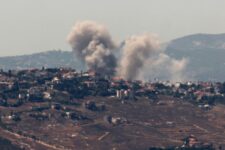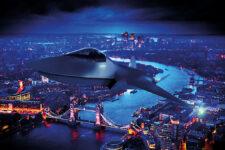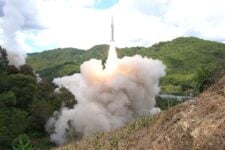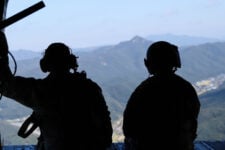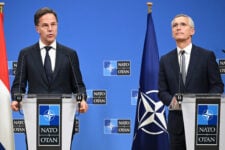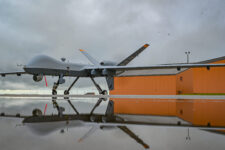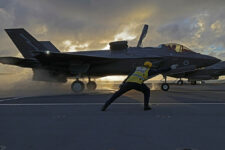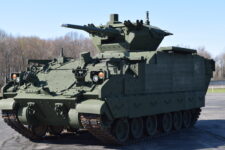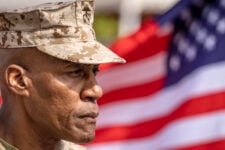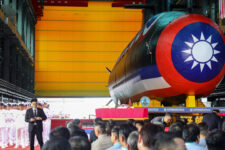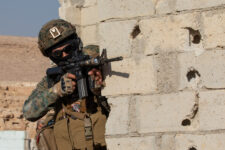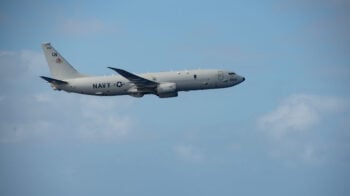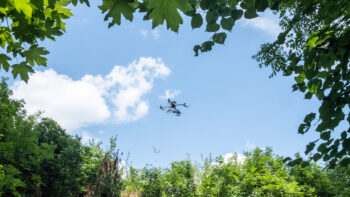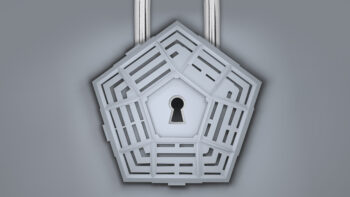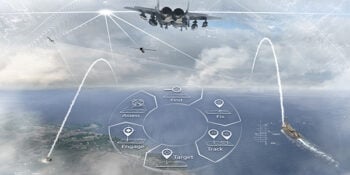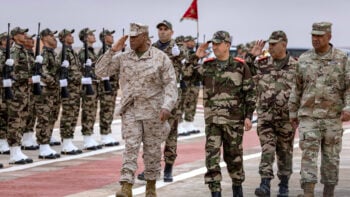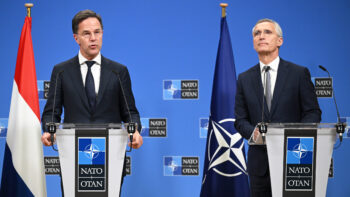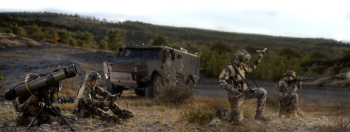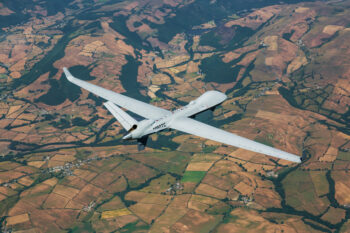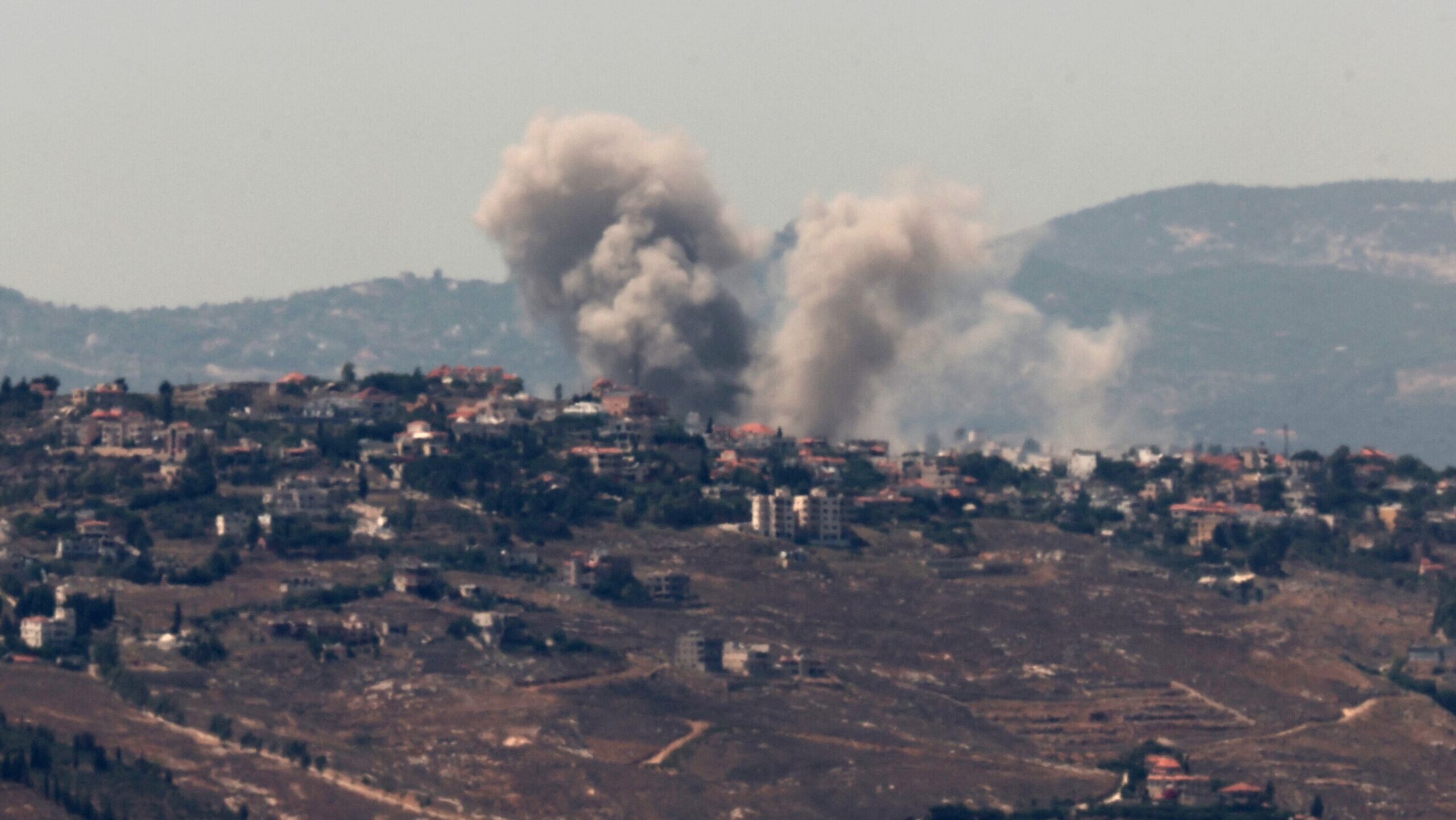
This picture taken from northern Israel shows smoke billowing during Israeli bombardment of southern Lebanon on June 25, 2024, amid ongoing cross-border clashes between Israeli troops and Hezbollah fighters. (Photo by JACK GUEZ / AFP) (Photo by JACK GUEZ/AFP via Getty Images)
Kiryat Shmona — On Oct. 20, a week and a half after Hamas launched its attack on Israel, 24,000 residents were evacuated from the city of Kiryat Shmona, located along the northern border with Lebanon. And they weren’t alone: Two dozen smaller communities were also evacuated over fears that Hezbollah, an Iranian-backed terrorist group, would launch an attack similar to Hamas.
In total, 80,000 people left their homes. Today around 50,000 remain evacuated, living in Israeli hotels or other communities, receiving some government support — but unsure when, or if, they will ever feel safe to return home. And events of the last few weeks have done little to raise spirits.
Breaking Defense spent June 23 and 24 in the region, speaking to a mix of Israel Defense Forces officers, experts and security officials from the communities. The consensus is that a conflict with Hezbollah is more realistic today than at any point since the Oct. 7 attacks, and there is acknowledgement that such a conflict would be difficult in a way the Gaza operation has not been.
The larger context of what is unfolding in the north can be seen in recent talks in Washington. Israel is facing what Defense Minister Yoav Gallant this week called a “crossroads,” as he led a large delegation from his ministry to discussions in Washington.
That term, “crossroads” refers to Israel’s eight month war in Gaza, which is becoming a less intense conflict, and the prospect of war shifting to the northern border and Hezbollah — which, in turn, could lead to a regional conflict with Iran. As a sign of how serious the situation is, Gallant has held meeting with presidential advisors Amos Hochstein and Brett McGurk, as well as US Secretary of State Antony Blinken, National Security Advisor Jake Sullivan and Secretary of Defense Lloyd Austin.
“In the north, we are determined to establish security — changing reality on the ground, and bringing our communities home safely,” Gallant said in Washington. “We are working closely together to achieve an agreement, but we must also discuss readiness, for every possible scenario. The greatest threat to the future of the world is Iran. And time is running out,” Gallant said.
FROM THE OTHER SIDE OF THE BORDER: In South Lebanon, empty villages, ruined crops and fears of what comes next
In other words, after eight months of war in Gaza, the spotlight is on Lebanon and ending Hezbollah’s attacks. However, Hezbollah is a much stronger, entrenched force than Hamas, and an attack into Lebanese territory would likely trigger Lebanese government response and political condemnation abroad — all factors that Israel needs to weigh as it considers its next steps.
However, touring the ground here, it is easy to understand why there is a sense that Hezbollah cannot simply be allowed to act with impunity.
Hezbollah has carried out more than 5,000 rocket, missile and drone attacks on Israel since Oct. 7. While there have been periods of relative calm, attacks in recent weeks have increased significantly, to the point it is now normal for several attacks a day, whether from rockets, anti-tank missiles or drones, the latter of which are seemingly becoming more precise. In return, Israel carries out its own attacks, striking Hezbollah launch sites and what it says is terrorist infrastructure in areas in southern Lebanon. The exchanges have led to large fires on both sides of the border, devastating crops relied on by villagers regardless of nationality.
Even outside of the evacuation area, where life has largely been able to carry on as normal, there are clear impacts from the attacks over the Lebanese border. The northern Galilee is usually a center of tourism, with people staying in small cabins, known as Tzimurs in Hebrew. These local businesses are now all shuttered.
Even in areas away from the frontline, normal activities such as hiking are out of the question for families because Hezbollah has increased its attacks deeper into Israel. Videos posted online showing a bus coming under fire have made people reticent to send children on school trips, for instance. Civilian life does not look set to return until Israel’s government assures residents that there has been an agreement that removes Hezbollah from the border, or until a military operation is launched.
Israeli communities along the border today largely remain evacuated. However, some people, mostly middle-aged and older men, have returned. Some of the men serve as reservists in the local security teams of these communities, an organizational structure that has existed since the early days of Israel in one form or another. After Oct. 7, the men were enlisted as reservists and received uniforms and rifles. They have also been given the task of training new members so that most communities have a platoon-sized force of these soldiers. The men only serve in their community, usually guarding the community’s gate, a local, small tripwire as part of the much larger force of IDF units that protect the border.
Metulla, the northernmost town in Israel, sits at the top of the Huleh Valley north of Kiryat Shmona. Prior to the war one could visit here and walk down a national park trail that follows a stream fed by a natural spring, giving a clear view into Lebanon — and the Hezbollah flags that could be seen in the distance. Now Metulla is a main target of Hezbollah. On the evening of June 23 anti-tank missiles fired by Hezbollah wounded two people; three days later, it fired another five anti-tank missiles at the town.
Israel’s Home Front Command, which is tasked with protecting the local population, has sought to meet the challenge by placing armored temporary shelters in towns and near bus stops. However, a drive around the Galilee near the border reveals that, while there are new shelters, there are not enough to provide coverage in most areas; communities such as Kiryat Shmona are so close to the border that people only have approximately ten seconds to reach shelter, according to a local security official. Iron Dome interceptors are often launched even before sirens sound, because of the proximity of the threat.
Which is to say, any fighting that breaks out with be fierce and likely be accompanied by waves of attacks into Israel itself.
The IDF is currently deployed in two regional divisions, the 91st on the Lebanese border, and the 210th in the Golan on the Syrian border. The IDF also created a new Mountain Brigade to help defend Mount Dov and the Hermon, two mountains that form a kind of hinge on the Lebanon-Syria border at the junction of the 91st and 210th. The frontline divisions are backed by troops from the 36th Division and 146 reserve Division. The 36th is usually located in the north and consists of troops who know this area, such as Golani infantry and the 188th Armored Brigade. After fighting in Gaza between October and December, these units moved back north.
At the IDF’s Northern Command in the hill town of Safed, which is several miles from the border with Lebanon, the base is a center of activity. IDF soldiers and officers are clear eyed about the challenges ahead, but highly motivated. Lt. Col. Eran Salmon, a commander in the IDF’s Home Front, compared the current crisis to Israel’s “second war of independence.”
Finland selects SNC’s RAPCON-X for MVX border surveillance jet program
The pair of new aircraft are set to replace Dornier 228 types, with production out of SNC’s integration center in Hagerstown, Maryland.

